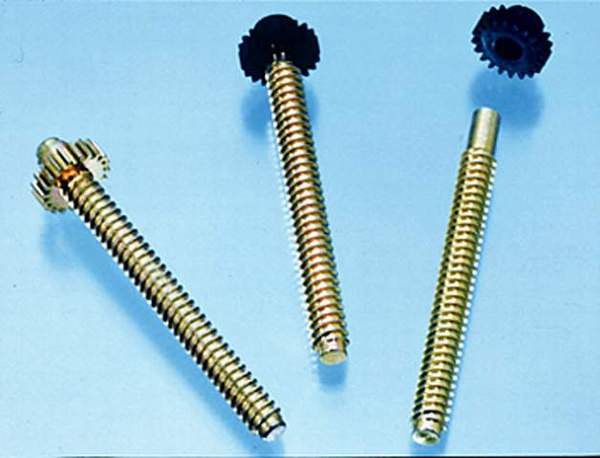Casting Study: Lead Screw
 Field problems with a gear-driven lead screw assembly prompted the company’s engineers to re-evaluate the design. The gear drive comprised a steel screw-machined shaft and a plastic gear. Assembly required the plastic gear to be pressed onto the shaft. Failures frequently occurred with the fit: if it was too loose, the gear slipped on the steel shaft, and if it was too tight, the gear cracked during pressing. A one-piece plastic lead screw was an obvious consideration, but was ruled out because the actuators are exposed to temperature extremes. In certain conditions, ambient temperatures reach 140 degrees F.
Field problems with a gear-driven lead screw assembly prompted the company’s engineers to re-evaluate the design. The gear drive comprised a steel screw-machined shaft and a plastic gear. Assembly required the plastic gear to be pressed onto the shaft. Failures frequently occurred with the fit: if it was too loose, the gear slipped on the steel shaft, and if it was too tight, the gear cracked during pressing. A one-piece plastic lead screw was an obvious consideration, but was ruled out because the actuators are exposed to temperature extremes. In certain conditions, ambient temperatures reach 140 degrees F.
Designers did not want to compromise component strength under such conditions. Engineers felt that a single-piece die casting would not only add strength and improve quality, but also reduce total component cost. It was determined that the shaft with its double start, 5/16 in. dia.-12 pitch threads and a Class 2 fit, could be successfully zinc die cast. Engineers wanted continuous thread contact and ruled out parting line flats on the threads. To meet this requirement, a trim die was built to remove the flash but only a portion of the thread. This allows enough thread to assure continuous contact. As a result of the conversion to zinc die casting, the design team cut the component cost in half. At current production levels, tooling payback is seven months.